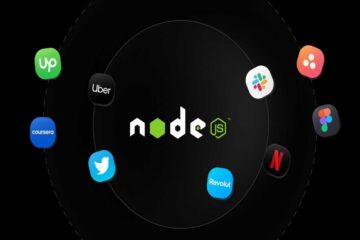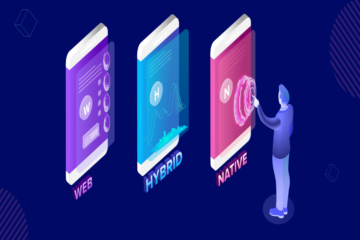What is automation?
Over the past decade, Technology Automation has significantly disrupted the way we do business. Artificial intelligence (AI), machine learning, the Internet of Things (IoT), and cloud computing have left their fingerprints on virtually all organizational processes, and this evolution isn’t anywhere close to complete.
Cloud computing is a cornerstone of computing automation, and it’s becoming increasingly prevalent. According to Gartner, by 2021, more than three-quarters of midsize and large organizations will have adopted a multi-cloud and/or hybrid IT strategy. By 2022, public cloud services will be essential for 90 percent of business innovation, which is critical for the rapid expansion of IoT devices and systems. Gartner estimates that, by 2024, more than half of enterprise applications in production will be IoT enabled.
Automation and the COVID-19 pandemic
The COVID-19 pandemic has hastened the automation revolution in several ways. First, our increased reliance on technology means tech applications across the board have taken a higher priority, accelerating current automation trends.
Second, hygiene concerns and social distancing require maximum use of technology, machinery, and automated processes. Retail stores have changed how they market and sell products, the number of daily video conferences in America has skyrocketed, and even restaurants have modified the way food is delivered to prioritize distance and safety. The numerous COVID outbreaks in the close confines of meat facilities across the United States demonstrate how susceptible we are to a viral spread when working closely with other people.
Finally, the slowly changing nature of the labor market has introduced several complications. The pandemic showed that long, complicated global supply chains were incredibly fragile, driving a move away from globalization and toward regionalization. The United States and China are slowly divorcing as critical trading partners, which means a “reshoring” of manufacturing and production. However, as that labor returns from Asia to the US, it carries a difficult choice: much higher labor costs or increased automation. Automation is often the only financially sustainable way forward for many companies.
The future of automation
Network administrators have a simple rule: if a task is repeated more than once per week and takes more than two minutes to complete, it should be automated. While this can save a tremendous amount of time, it comes at a cost that illustrates the current Achilles heel of automation. The lack of enterprise-level adoption makes the vast majority of current automation efforts ad hoc. Different admins automate processes in various ways, sometimes using numerous programming languages to accomplish the same effect. A patchwork quilt of automation creates short-term time “savings” but can complicate long-term, systemic automation at the organizational level.
As we look to the future, automating the automation to provide a comprehensive overview and insight into all business processes will be crucial. Tying all of the ad hoc processes together with strategic oversight is vital, and this involves a process known as hyperautomation.
Hyperautomation enhanced by AI/ML tech is the next-generation solution
Gartner defines hyperautomation in this way:
“Hyperautomation is an unavoidable market state in which organizations must rapidly identify and automate all possible business processes. Hyperautomation refers not only to the breadth of the palette of tools but also to all the steps of automation itself (discover, analyze, design, automate, measure, monitor, reassess).”
Automation doesn’t just accelerate the way we do business; it fundamentally changes it. As strategic processes are automated, and organizations can take advantage of the full benefits machine learning and AI promise, automation will rapidly accelerate into hyperautomation. Until that happens, however, digital transformations will likely cost twice as much and take twice as long as projected in 2020. Ironically, the greatest enemy of automation is that it isn’t being implemented in an automated fashion.
Hybrid digital infrastructure management (HDIM) for the automated enterprise
Automating individual processes can create net efficiencies, but it also introduces complications. Dissimilar automation tools often require their own dashboards, and managing numerous applications can quickly subtract the savings that automating was supposed to bring. The continually increasing complexities of IT systems requires platforms that will allow IT professionals to centrally manage workloads, resources, and processes across numerous platforms, systems, and environments.
Hybrid digital infrastructure management (HDIM) is the conceptual key. Merging inputs from across an organization into a single dashboard allows the full spectrum of automation benefits to be realized. While HDIM is the future, numerous IT challenges stand between here and there. Creating tools that will transcend public and private clouds, on-prem data centers, disparate operating systems, and software from different vendors using various programming languages is daunting.
As automation continues, however, the level of efficiency companies can expect from these technologies will accelerate exponentially. This movement is already occurring, and Gartner projects that within the next 18 months, one out of every five enterprises will use HDIM tools to optimize workload placement across multiple operating environments.
Adopting a multicloud and/or hybrid IT strategy
For the most part, gone are the days when businesses exclusively used on-prem data centers. While they will always have a place for niche uses and highly-specific applications, a recent report found that 57 percent of enterprises adopt a hybrid approach with a mix of data center and cloud computing resources. This often includes a multi-cloud strategy, where more than one cloud platform is used to create a composite operating environment.
There are many benefits to this, allowing companies to take advantage of the unique services public and private clouds provide while supplementing them with on-premise computing assets, but there is a tradeoff. The increased complexity of multi-cloud or hybrid systems can be overcome with higher automation levels, but it will need to be controlled at a central dashboard. This is a clear example of why HDIM is the future of automated enterprise.
The use of robotic process automation (RPA) for front-office functions
Automation is hardly limited to back-end applications. An increasing number of businesses are automating front-office functions; one notable example is conversational AI in the banking world. Simplifying computer interactions to voice conversations means millions of people who previously had no access to technology can access traditional banking services. No training is needed—customers don’t even need to be able to read. Natural language processing software, coupled with artificial intelligence, facilitates rapid interactions across cultural and linguistic barriers.
Within the next ten years, 95 percent of all client interactions in the banking arena will involve artificial intelligence. Using AI to streamline customer exchanges that would traditionally require live representatives in the front office will save untold millions in costs while substantially improving customer access to information.
IoT-enabled enterprise applications
If AI is the brains of automation, IoT is all of the senses. Being able to pull information from sensors across an enterprise, feed it through a machine learning system to detect anomalies, then interpret the data via artificial intelligence is nothing short of a complete revolution. There are two main areas where IoT-enabled applications could introduce outsized benefits:
- The more information a company has about its customers’ needs, the more quickly and efficiently it can pivot to meet them. As IoT becomes more prevalent, operating speed can increase.
- IoT-enabled apps can detect and deliver data on how customers use products and services, allowing companies to tailor their offerings and increase overall revenue and profitability.
Each of these benefits serves to amplify the other aspects of automation. Each operating cycle operates more efficiently, driving rapid evolution across an organization’s processes.
Conclusion
The future of automation is very bright. From front-office interfaces to remotely monitored IoT-enabled enterprise applications, automated processes will become an increasingly prevalent aspect of our lives. There are challenges, of course: chief among these is the struggle to automate automation at a strategic level. Combining all inputs from an automated enterprise to a hybrid digital infrastructure management system will go a long way toward addressing this issue. As these obstacles are overcome, every facet of the business world will benefit from the numerous advantages that IT automation provides.


0 Comments